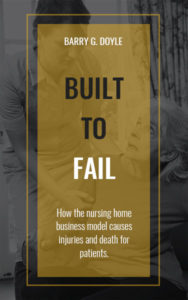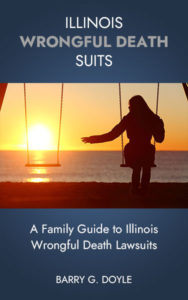The Illinois Department of Health has cited and fined Fondulac Rehabilitation and Health Care Center when a cognitively impaired resident with dementia walked out of the facility undetected and was found 2.2 miles away standing on a concrete median in the dark. The facility failed to follow its own safety protocols when staff dismissed a door alarm as wind and did not conduct the required headcount to locate missing residents.
The resident, who required assistance with transfers and had “intermittent confusion” according to his fall risk assessment, had previously expressed confusion about wanting to go to the bank and had threatened to leave the facility in the past. A social worker noted that the resident “has poor cognition but doesn’t feel he does” and had “recently started wanting to go to the bank.” Despite these documented warning signs and his moderate elopement risk rating, no safety measures were implemented to prevent him from leaving the facility unsupervised.
The incident began around 2:00 AM when the facility’s smoking patio door alarm sounded. The Licensed Practical Nurse on duty responded to the alarm but made a critical error in judgment, stating she “thought the wind blew the door open and sounded the alarm” and “did not see any residents outside, so I shut the alarm off.” The nurse later admitted “I should have done a resident head count and did not,” directly violating the facility’s elopement policy which requires staff to “immediately respond to and determine the cause of the alarm” and conduct a headcount of all at-risk residents when no obvious cause is found.
The facility’s own elopement policy clearly states that when a door alarm sounds and no reason can be found, “the charge nurse will initiate an accounting of all residents at risk for elopement” and if residents are still unaccounted for, “a complete head count of all residents will be conducted.” The nurse’s failure to follow this protocol meant that staff had no idea the resident was missing for several hours, allowing him to travel a dangerous distance in harsh conditions.
The resident was not discovered missing until around 5:00 AM when another nurse happened to spot him while driving to work early. The nurse described finding the resident “standing with a wheeled walker in the middle of a concrete divider that separates two streets” near the local college. When asked what he was doing, the resident said “he was going home” and told the nurse “he wasn’t going back there,” referring to the facility. The temperature was 47 degrees, it was dark, and the resident was wearing dark-colored clothing, making him nearly invisible to traffic.
The nurse who found the resident attempted multiple times to convince him to get in her car but had to turn around at a traffic light, and “by the time I turned around the resident was gone.” She called for backup from facility staff, and a Certified Nursing Assistant arrived to help search. They eventually found the resident inside a college building where he “was wanting to get on a bus to go home.” The staff member noted that the resident “stated he was cold” and confirmed he had left the facility around midnight, meaning he had been wandering in dangerous conditions for approximately five hours.
The route the resident traveled was particularly hazardous, with investigators noting that “during the drive there was a steep hill that leads to the main road” and “the road had many curves and hills.” The facility’s Director of Nursing confirmed that “a lot of the road the resident used did not have sidewalks,” and multiple staff members agreed that the resident “would not be safe to leave the facility unattended” and “would not be safe leaving the building unattended by staff, especially after dark.”
This incident revealed systemic failures in the facility’s safety protocols. The investigation found that another high-risk resident was also not receiving required safety interventions, as their care plan called for “electronic sensor device to alert staff of exit attempt or if unavailable, place on 1:1 observations,” but staff confirmed this resident “has never had an electronic monitoring device on or one-on-one staff supervision.” The resident was observed wandering the facility without any monitoring devices or supervision during the investigation.
The incident highlighted dangerous gaps in supervision that could have resulted in serious injury or death, as the resident was found standing in the middle of a busy road in the dark, wearing dark clothing, and had been exposed to cold temperatures for hours while walking an unsafe route with no sidewalks.
One of our core beliefs is that nursing homes are built to fail due to the business model they follow and that unnecessary accidental injuries and wrongful deaths of nursing home residents are the inevitable result. Our experienced Chicago nursing home lawyers are ready to help you understand what happened, why, and what your rights are. Contact us to get the help you need.


